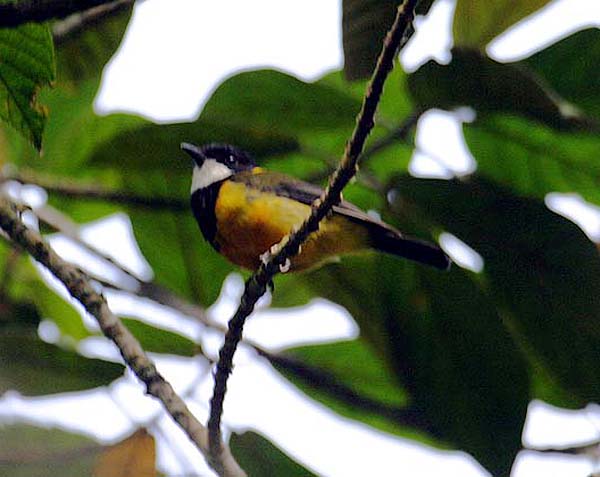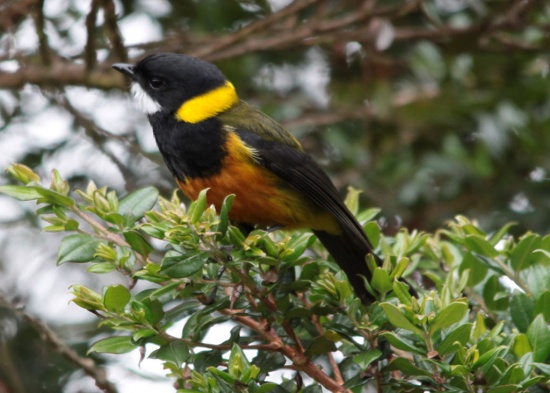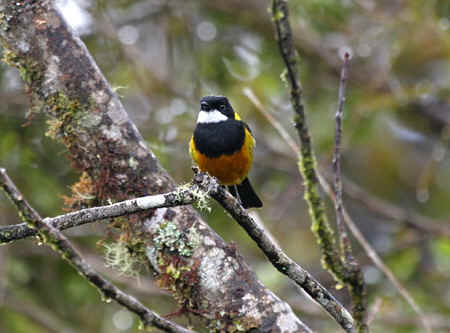
Pachycephala schlegelii
SUBFAMILY
Pachycephalinae
TAXONOMY
Pachycephala schlegelii Schlegel, 1871, Arfak Mountains, New
Guinea. Three subspecies.
OTHER COMMON NAMES
English: Schlegel’s whistler; French: Siffleur de Schlegel; German:
Schlegeldickkopf; Spanish: Chiflador de Schlegel.
PHYSICAL CHARACTERISTICS
5.9–6.5 in (15–16.5 cm); 0.04–0.05 lb (19.5–24.8 g). Black
head, throat, and wing and tail coverts; orange belly; and
brownish mantle with yellow stripe.
DISTRIBUTION
New Guinea from about 4,290 to 12,000 ft (1,300 to 3,500 m),
mainly above 6,100 ft (1,850 m). P. s. schlegelii: northwest New
Guinea; P. s. cyclopum: north central New Guinea; P. s.
obscurior: central, east, and northeast New Guinea.
HABITAT
Inhabits forest and forest edges.
BEHAVIOR
Usually seen singly or in pairs. During display the crown feathers
are raised and the nape feathers erected across back of the head.
FEEDING ECOLOGY AND DIET
Gleans insects, spiders, and seeds.
REPRODUCTIVE BIOLOGY
Nesting habits undescribed. Lays two white eggs spotted with
black and lavender.
CONSERVATION STATUS
Not threatened. Common to abundant in middle elevations
and above, but scarce lower down.
SIGNIFICANCE TO HUMANS
None known.
Photo Gallery of - Regent whistler




 Animalia Life
Animalia Life